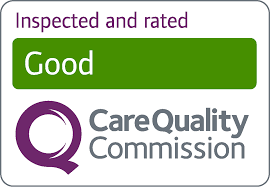What is Muscular Dystrophy?
Muscular dystrophy is a group of inherited conditions that cause progressive muscle weakness and loss of muscle mass over time. Although there is currently no cure, with the right treatment and support, people living with muscular dystrophy can maintain independence and enjoy a high quality of life.
So, what exactly is muscular dystrophy, and how is it managed? Let’s explore the different types, symptoms, diagnosis, and care options available.
Types of Muscular Dystrophy
There are several forms of muscular dystrophy, each with its own pattern of symptoms, severity, and rate of progression. While some types may lead to significant physical disability, others can have minimal impact on life expectancy or mobility. Duchenne Muscular Dystrophy (DMD) is the most common and usually appears in early childhood, typically between ages 1 and 3. Children with DMD often show enlarged thighs and difficulty walking, running, or jumping.
The most common types include:
• Duchenne Muscular Dystrophy
• Becker Muscular Dystrophy
• Myotonic Muscular Dystrophy
• Facioscapulohumeral Muscular Dystrophy
• Emery-Dreifuss Muscular Dystrophy
• Limb-Girdle Muscular Dystrophy
• Oculopharyngeal Muscular Dystrophy
Signs and Symptoms of Muscular Dystrophy
Muscle weakness is the primary symptom across all forms of muscular dystrophy. However, each type presents its own unique set of challenges. Here’s a breakdown of symptoms by type:
Duchenne
Trouble walking, loss of reflexes, poor posture, scoliosis, breathing and swallowing issues, heart and lung weakness
Becker
Tiptoe walking, frequent falls, muscle cramps, trouble standing up
Myotonic
Neck weakness, trouble swallowing, vision problems, weight loss, excessive sweating
Facioscapulohumeral
Difficulty chewing/swallowing, slanted shoulders, hearing problems, mouth asymmetry
Emery-Dreifuss
Weak upper/lower limb muscles, breathing issues, heart problems, joint contractures
Limb-Girdle
Weakness in hips/shoulders, frequent tripping, difficulty carrying objects
Oculopharyngeal
Drooping eyelids, swallowing problems, voice changes, heart issues, walking difficulty
How is Muscular Dystrophy Diagnosed?
Diagnosis typically starts when symptoms begin to interfere with daily life, often during childhood or adolescence. Your GP may recommend several assessments, including:
Symptom review – Discussing difficulties such as trouble climbing stairs or lifting objects.
Family history – Identifying a genetic link can help pinpoint the type of muscular dystrophy.
Physical exam – Including checks for reflexes, posture, and muscle tone.
Blood tests – Measuring creatine kinase levels, which are elevated when muscles are damaged.
Electrical muscle and nerve tests – Evaluating activity during rest and movement.
Biopsy – A small sample of muscle tissue is analysed for protein and gene abnormalities.
Muscular Dystrophy Treatment
Although muscular dystrophy cannot currently be cured, many treatments can help manage symptoms and help maintain mobility:
Low-impact exercise – such as swimming can support muscle strength without strain.
Physiotherapy – helps preserve flexibility and reduce joint stiffness.
Speech and language therapy – is useful for addressing swallowing and speech difficulties.
Nutritional support – a dietitian may be necessary if swallowing problems pose a risk of choking or chest infections.
A holistic care plan often includes input from physiotherapists, occupational therapists, speech therapists, and medical professionals to address the complex needs of each individual.
Muscular Dystrophy Care
At Novus Care, we understand the unique challenges that come with those living with muscular dystrophy. Our experienced care team provides personalised care in the home that adapts as care and support needs change. We can help with:
Daily Living Support
Assistance with everyday tasks can include help with personal hygiene such as bathing, and dressing, along with support for meal preparation, feeding, and getting around safely using mobility aids when required.
Mobility and Physical Therapy
Staying active is key. Adapted exercise routines, along with physical and occupational therapy, help preserve strength and flexibility. Equipment like wheelchairs, walkers, or braces can significantly improve mobility and promote greater independence.
Respiratory Support
As Muscular Dystrophy can impact breathing muscles, respiratory care is crucial. This may involve devices to assist with coughing, and in more advanced cases, the use of ventilators to support breathing.
Medication Administration
Managing medications effectively is essential. Caregivers often play a role in organizing dosages, maintaining schedules, and ensuring treatments are followed correctly.
Emotional Support
A nurturing environment filled with encouragement, companionship, and positivity can make a significant difference in emotional well-being.
Life Coordination
Carers often act as advocates—helping you with hospital, GP appointments, attending social and family events to ensure the individual’s needs are fully met across all areas of life.
Arrange Muscular Dystrophy Care today
We can provide support on a visiting care, live in care and respite care basis. Call us for an informal chat today on 0800 138 4030 or email: [email protected]
Schedule a free assessment
Get in touch to speak with our care team about your ideal care plan.



